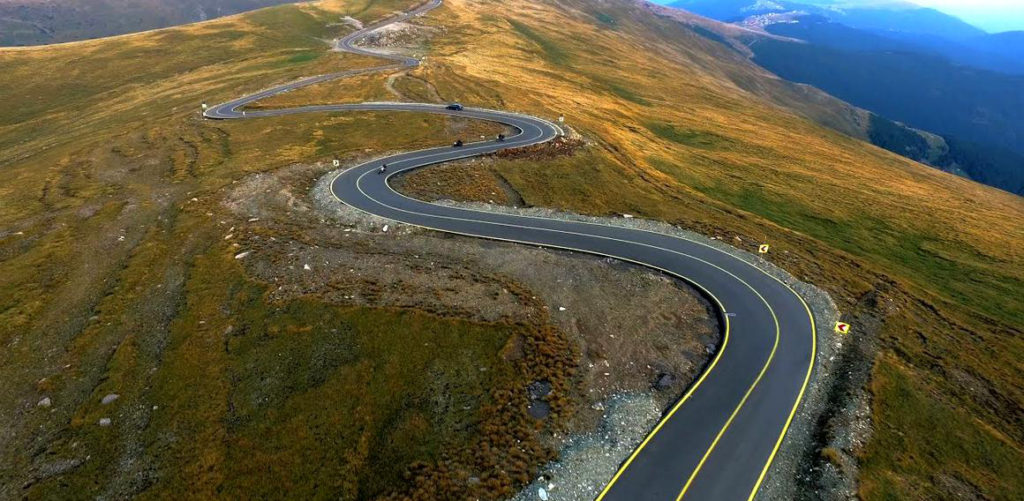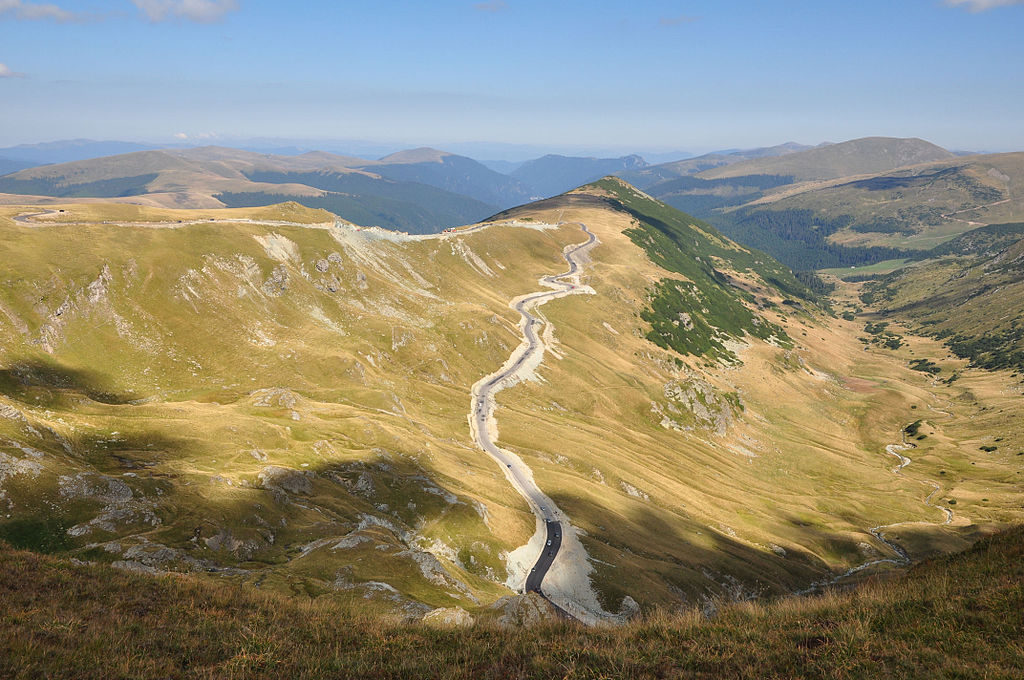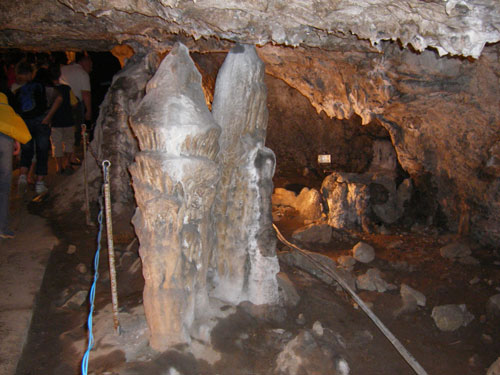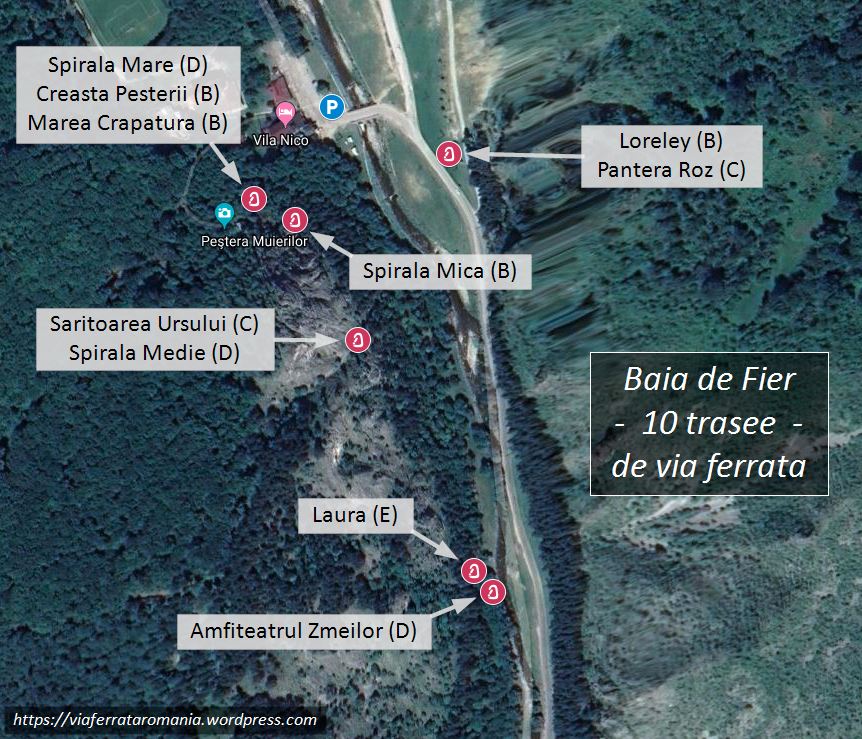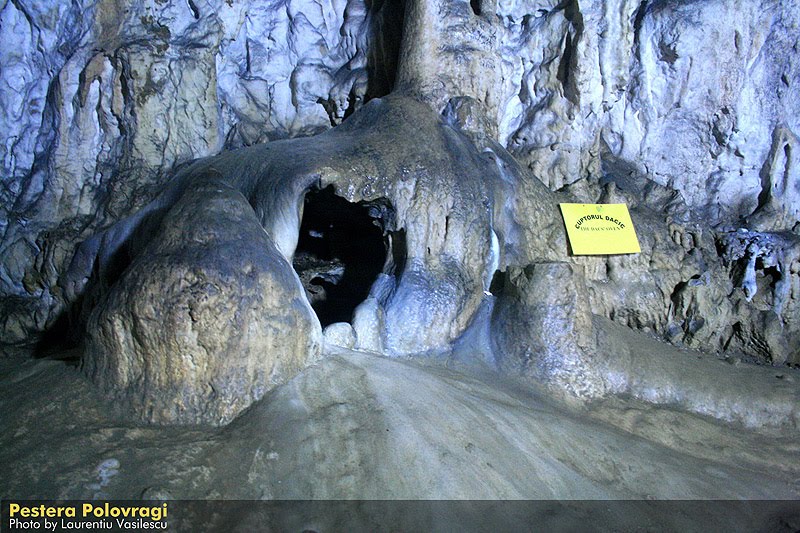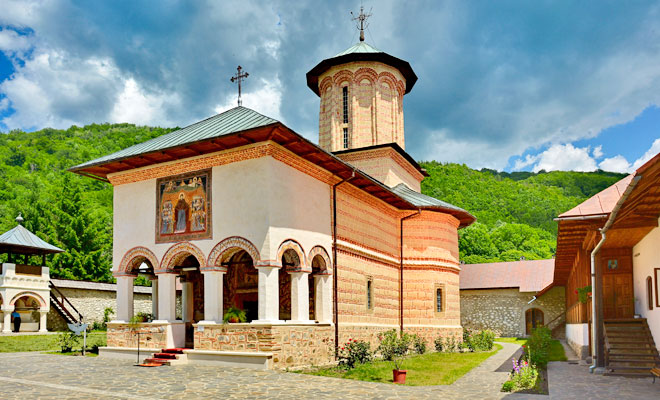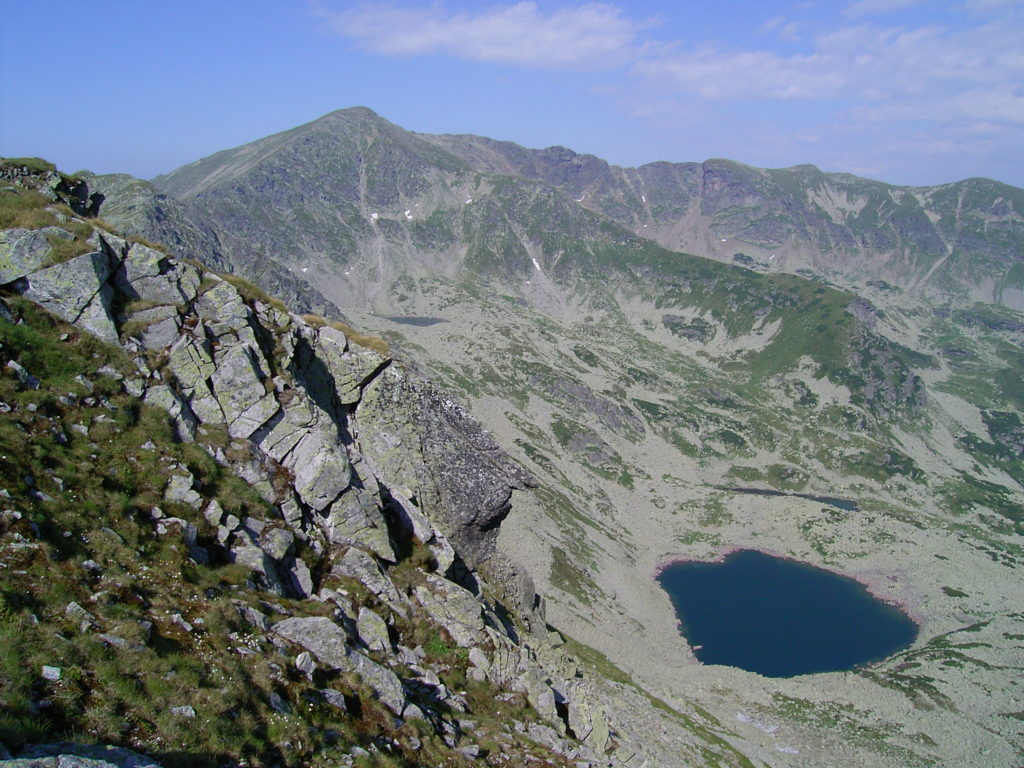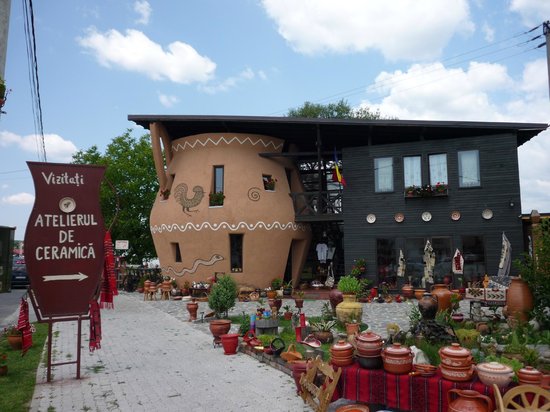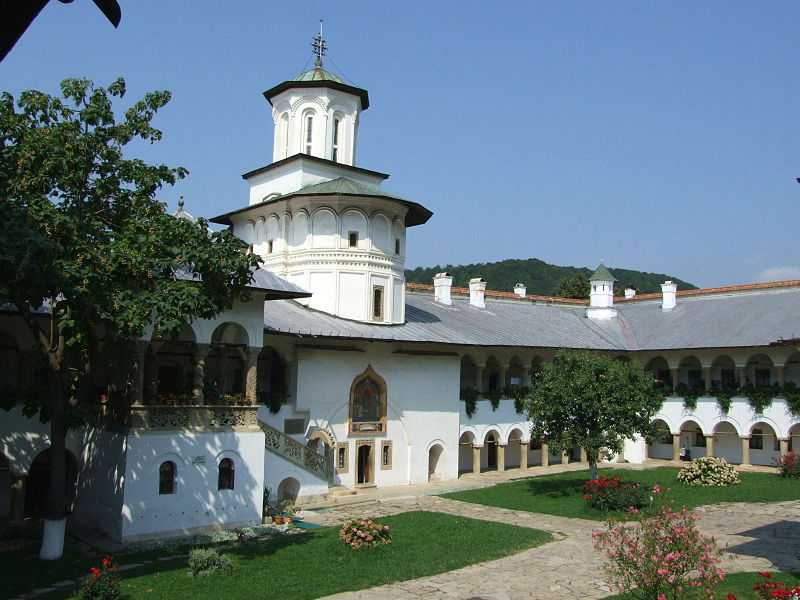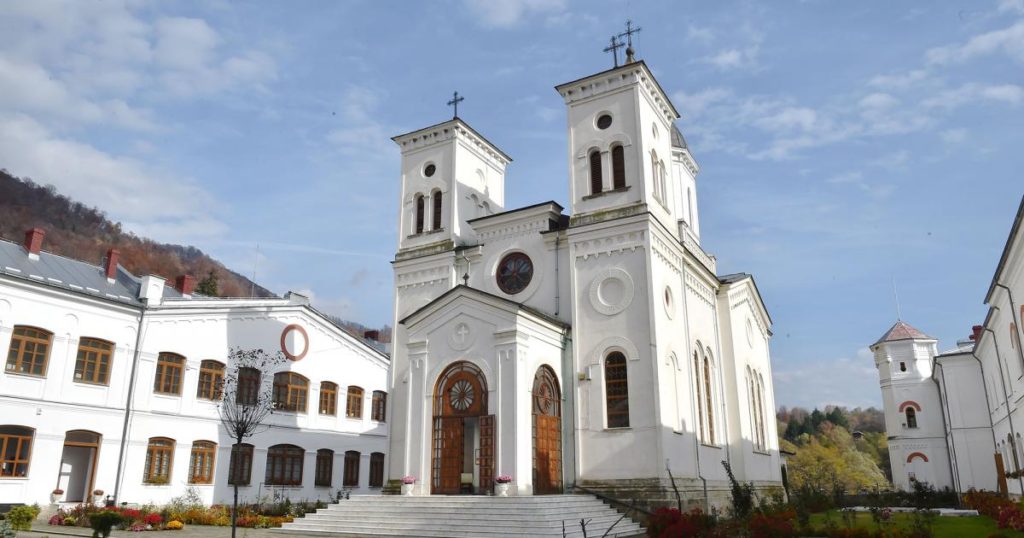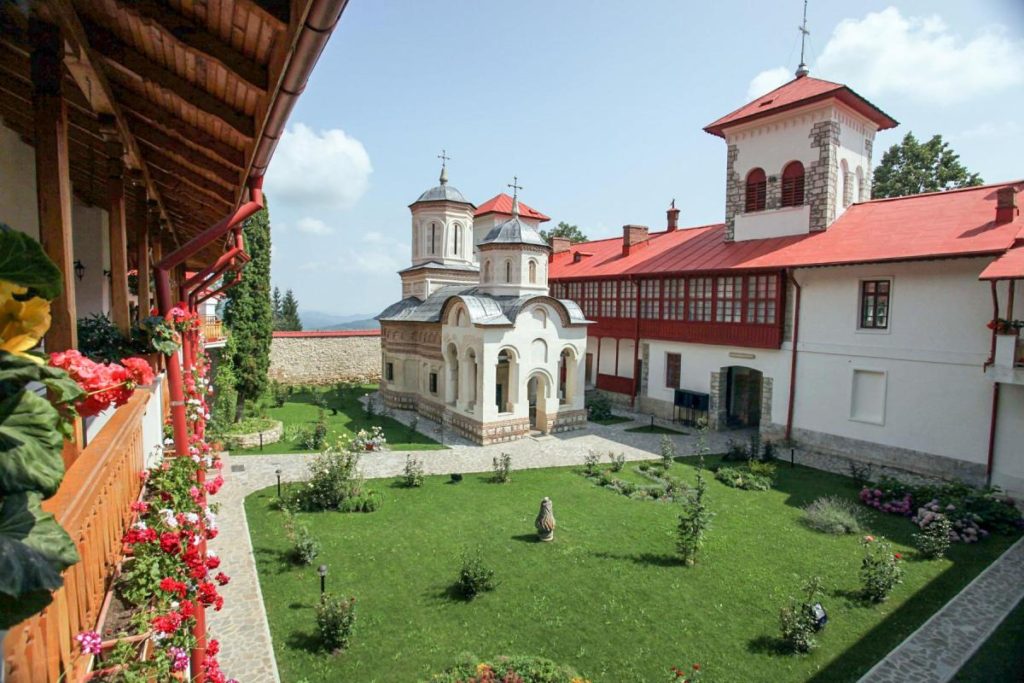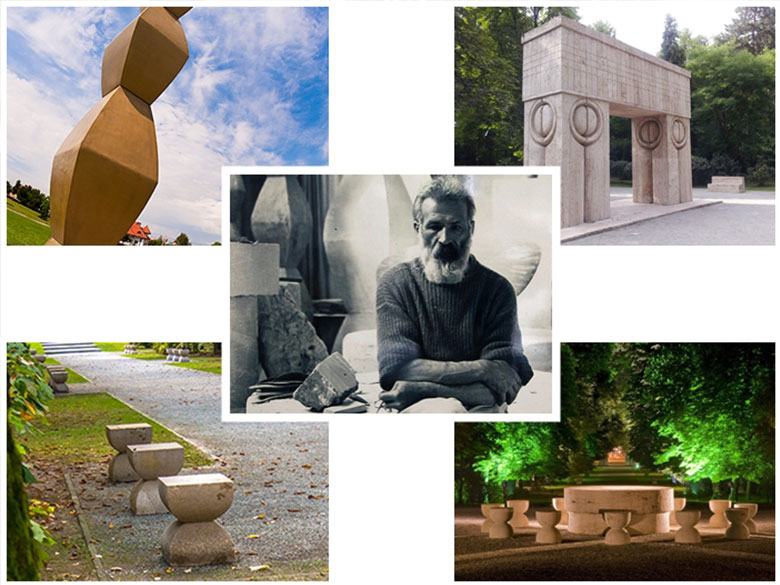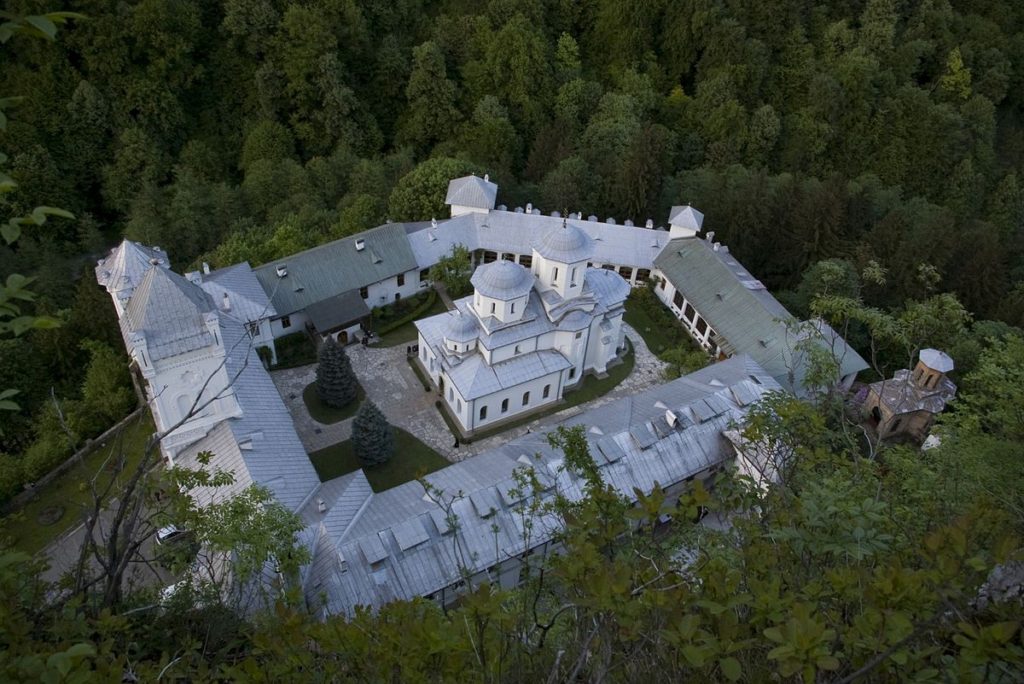It is located in the vicinity of the Oltet Gorge, in an orchard with different fruit trees and edible chestnut trees, reminiscent of the mild climate of the Tismana and Bistrita monasteries.
Built around 1505 by Radul and Patru, the sons of Danciul Zamona, the church of Polovragi Monastery has a Byzantine style, with three lobes, made in a proportional symmetry.
Noteworthy is the Catapeteasma made of lime wood, a true masterpiece of the old Romanian sculpture, having a rich ornamentation with floral braids.
During the reign of Constantin Brancoveanu, in 1693, the interior was painted, the porch was added in the Brancoveni style, some cells and the bell tower were built, as well as the fortress walls.

